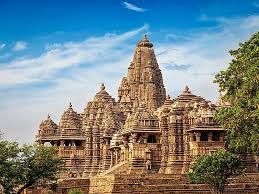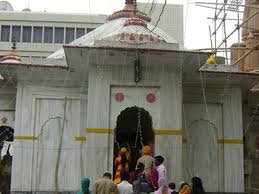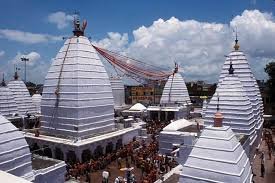The Khajuraho Temples, a UNESCO World Heritage Site, stand as a remarkable testimony to India’s rich cultural and architectural heritage. Located in Chhatarpur, Madhya Pradesh, these temples are renowned for their exquisite carvings, intricate sculptures, and spiritual significance. Built by the Chandela dynasty between the 9th and 12th centuries, the temples showcase a blend of devotion, artistic excellence, and human imagination.
As you walk through the ancient corridors of Khajuraho, you are transported to a time when artisans transformed stone into poetry, depicting stories of gods, celestial beings, and human experiences.
A Glimpse into History
The Chandela rulers were great patrons of art and culture, and under their rule, Khajuraho flourished as a center of religious and artistic expression. Originally, there were 85 temples, but only 25 have survived the ravages of time.
Interestingly, despite the erotic sculptures that adorn many walls, these temples primarily serve as places of worship. The carvings represent various aspects of life, including divine love, celestial beings, and spiritual teachings, reflecting the Tantric traditions that once thrived here.
Architectural Grandeur
One of the most fascinating aspects of the Khajuraho Temples is their intricate carvings and architectural precision. The temples are built using sandstone, with interlocking joints that hold the structures together without the use of mortar. The finesse with which the sculptures are carved makes each temple a masterpiece of Nagara-style architecture.
1. Western Group of Temples – The Main Attractions
The Western Group is the most famous and well-preserved section of Khajuraho. Some of the must-visit temples include:
- Kandariya Mahadev Temple – This is the largest and most magnificent temple in Khajuraho, dedicated to Lord Shiva.
- Lakshmana Temple – Dedicated to Lord Vishnu, this temple features a beautifully decorated entrance and detailed depictions of Hindu mythology, making it one of the oldest and best-preserved temples in the complex.
- Vishwanath Temple – Another significant Shiva temple, it houses a massive Shiva Lingam, along with sculptures of celestial beings, musicians, and dancers.
- Chitragupta Temple – This temple is unique as it is dedicated to Surya (the Sun God). The main idol showcases the Sun God riding a seven-horse chariot, a rare depiction in Indian temple architecture.
2. Eastern Group of Temples – A Blend of Hindu and Jain Heritage
The Eastern Group consists of both Hindu and Jain temples, highlighting the religious harmony of that era. Some notable temples include:
- Parsvanath Temple – The largest Jain temple in Khajuraho, dedicated to Lord Parsvanath, featuring exceptional carvings and delicate detailing.
- Brahma Temple – Unlike its name, this temple is dedicated to Lord Vishnu and is made of granite, differing from the predominantly sandstone structures in the area.
- Ghantai Temple – A beautiful Jain temple with intricate bell (ghanta) motifs on its pillars.
3. Southern Group of Temples – The Lesser-Known Gems
Though fewer in number, the Southern Group boasts significant temples:
- Duladeo Temple – Dedicated to Lord Shiva, this temple is known for its elegant carvings and delicate sculptures of apsaras (celestial maidens).
- Chaturbhuj Temple – It stands out as it houses a massive Vishnu idol, which is one of the tallest in Khajuraho.
The Symbolism Behind the Sculptures
One of the most debated aspects of the Khajuraho Temples is their erotic sculptures. Many believe that these carvings symbolize the Tantric traditions that flourished during the Chandela era. However, these depictions make up only 10% of the total artwork, while the rest showcase mythological stories, daily life, war, music, and devotion.
The erotic sculptures are believed to represent the transition from material life to spiritual enlightenment, emphasizing the idea that one must experience worldly pleasures before renouncing them for higher consciousness. They also reflect the celebration of love and human emotions, which were integral to ancient Indian philosophy.
Festivals and Cultural Events
To truly experience the grandeur of Khajuraho, visiting during the Khajuraho Dance Festival is a must. This week-long festival, held in February-March, showcases classical Indian dance forms like Bharatanatyam, Kathak, Odissi, and Kuchipudi, performed against the stunning backdrop of the illuminated temples. The festival brings the ancient temples to life, creating a mesmerizing atmosphere.
How to Reach Khajuraho
- By Air – The Khajuraho Airport (HJR) has flights connecting major cities like Delhi and Varanasi.
- By Train – The Khajuraho Railway Station connects to major Indian cities. Alternatively, Jhansi Railway Station (175 km away) offers better connectivity.
- By Road – Regular buses and taxis run from Jhansi, Satna, and Chhatarpur, making road travel an easy option.
Best Time to Visit
The best time to explore the Khajuraho Temples is between October and March, when the weather is pleasant. Summers (April to June) can be extremely hot, while monsoons (July to September) bring lush greenery but may hinder sightseeing.
Conclusion: A Journey into India’s Timeless Heritage
A visit to the Khajuraho Temples is more than just a trip—it is an experience that immerses you in India’s spiritual and artistic legacy. These temples stand as a testament to the genius of medieval Indian artisans, where every sculpture tells a story, and every corner echoes the devotion of the past.
If you are a history lover, an architecture enthusiast, or a spiritual seeker, Khajuraho is a must-visit destination. The breathtaking temples, combined with their deep symbolism and artistic brilliance, leave every visitor in awe. So, the next time you plan a trip to Madhya Pradesh, make sure Khajuraho is on your itinerary—it promises a journey through time that you will never forget.





